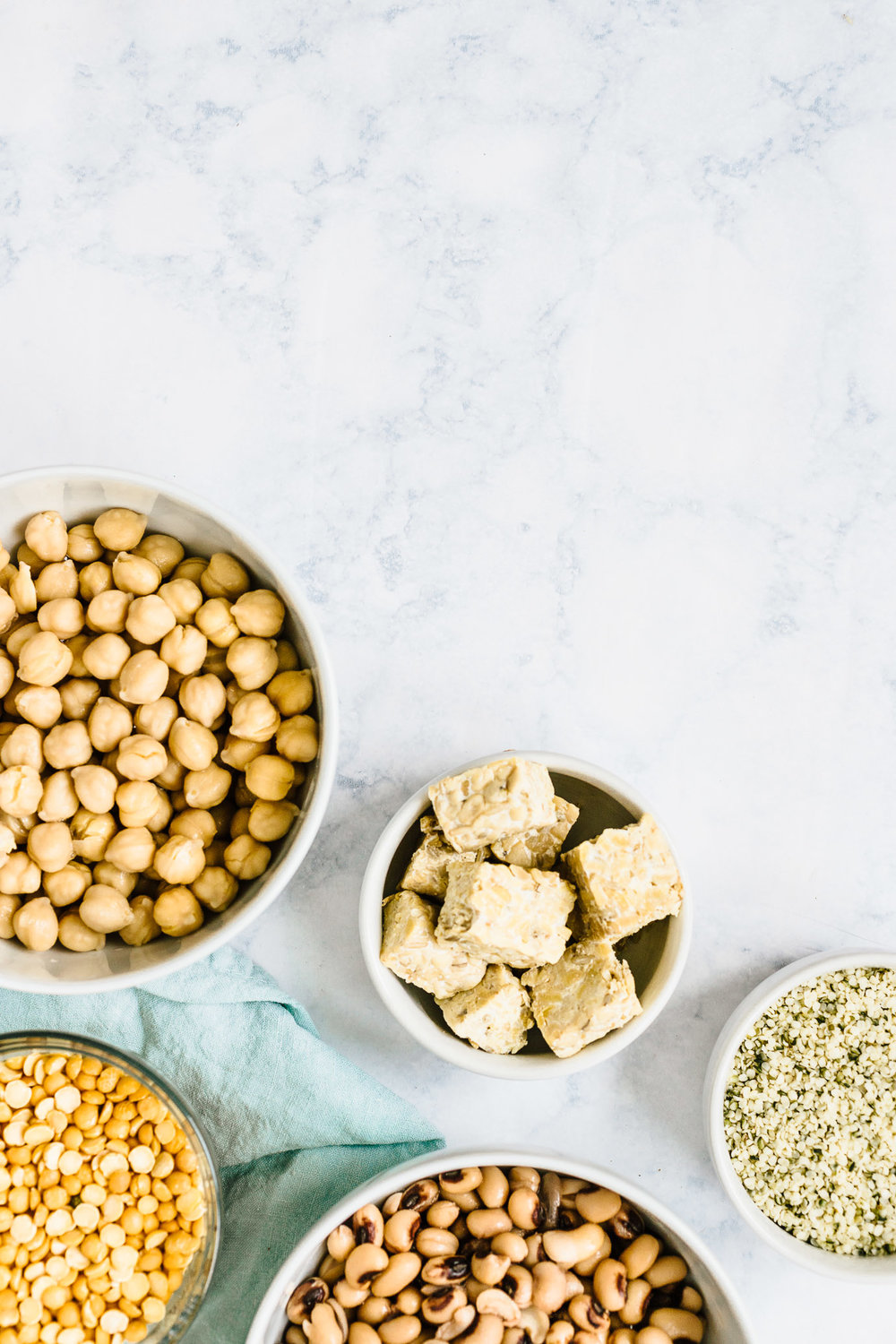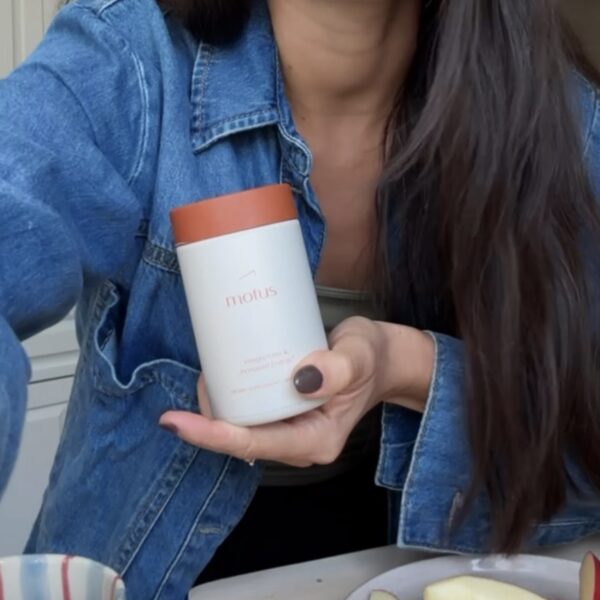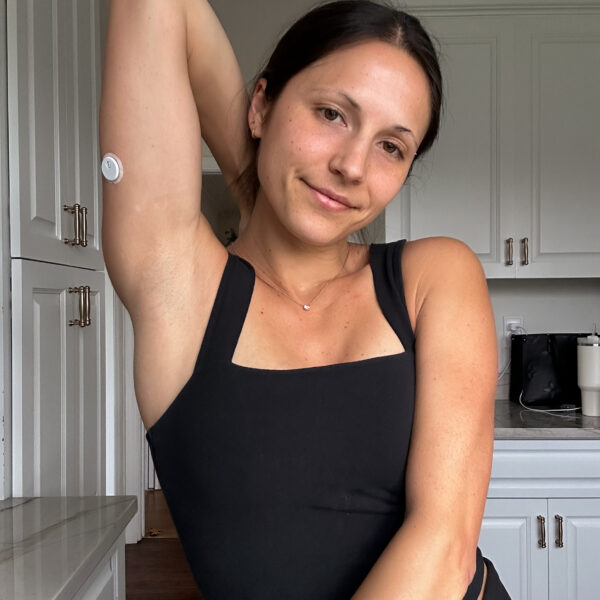Curious about the best sources of plant-based protein? This post covers the top 10 plant-based protein sources and gives you simple ideas on how to use them in your diet.
If you are solely plant-based or just trying to incorporate more plant-based proteins into your diet, yo’ve problem hear the question, Where do you get your protein? This is such a common question with plant-based eating. But the reality is most foods contain some protein. Yes, some sources are better than others but when you are eating enough vegetables, grains, legumes, nuts, and seeds throughout the day, chances are you are getting enough protein.
If you need a little refresher on protein and how much you need, check out Protein 101: A Simple Guide to Understanding Protein.
This post covers the 10 best sources of plant-based protein. Find out the top sources, the nutrition, and how to incorporate these protein sources into your diet with simple suggestions and delicious recipes. Whether you are a regular plant-based eater or just looking to add more plant-based protein to your diet, this guide is for you!

10 best sources of plant-based protein
1. Tempeh and Tofu
Protein Content: 10-20g per 4oz
Average serving size: 3-6 oz
Both soy-bean based proteins are an excellent source of protein. Tempeh has the upper hand over tofu with slightly more protein (about 20g per 4 oz compared to tofu which has about 10g per 4 oz). It’s also fermented, making it a source of probiotics.
When choosing tofu and tempeh opt for organic and sprouted. Choosing organic is important since soy is one of the most GMO crops and heavily treated with pesticides. Spouted tofu (along with nuts, seeds, and grains) makes the nutrients more available and easier to digest.
Soy is a controversial topic but for most healthy individuals shouldn’t be feared. That being said, if you struggle with hormone issues, thyroid issues or have a history of breast cancer it may be best to eliminate soy from your diet or talk with your doctor or a registered dietitian to see if soy is right for you.
How to Use:
-
- Quick Guide on Tofu
- Firm tofu and tempeh are great in a stir-fry or marinated and baked then used on salads, in macro bowls, or in sandwiches
- tofu scrambles are a simple scrambled egg alternative
- crumble tempeh for taco filling or pasta sauce
- silken tofu add to smoothies or use in puddings and sauce
2. Lentils
Protein Content: 18g per 1 cup
Average serving size: ½ to 1 cup
Just like beans, there are different types of lentils. The most common are the green lentil, French lentil, black and red lentil. French and black lentils keep there shape better when cooking so are best for salads and other stand-alone applications. Red lentils are by far the softest of the lentils and breakdown when cooked. This adds a creaminess to soups and stews. This is why there are often used for Indian dahls and kitchari.
How to Use:
-
- how to cook really good lentils
- add to soups
- make taco filling
- add to salads or grain bowls
- can also buy canned or steamed precooked lentils
Recipes to try: Black Lentil Salad with Radish an Herbs, Turmeric Lentil Soup with Kale, lentil mushroom bolognese sauce
3. Hemp seeds
Protein Content: 16g per 3 tablespoons
Average serving size: 1 – 3 tablespoons
Hemp seeds are a complete protein, meaning they have all 9 essential amino acids. Consider these nature’s sprinkles. They can top any dish to pack a serious nutrition boost.
Since hemp seeds are also considered a healthy fat, you may need to reduce the serving size depending on the other healthy fats in your meal. I recommend 1-2 servings of healthy fats per meal.
How to Use:
-
- top literally anything with hemp seeds for a protein boost.
- mix 1 tablespoon of hemp seeds with 1 tablespoon nutritional yeast for a healthy vegan “parmesan”
- make hemp seed milk
Recipes to try: Hemp seed basil pesto, Adaptogen Snack Balls, Strawberry Baked Oatmeal with Hemp Seeds
4. Beans
Protein Content: 12-15g per 1 cup
Average serving size: ½ to 1 cup
Beans are probably the most common plant-based protein given the variety, accessibility, and cost. They’re are eaten around the world and can be used in every type of cuisine, from tacos to minestrone. Plus, they are an easy way to add protein to your meal or replace an animal protein in your favorite dish.
How to use:
-
- add to soups
- make taco filling
- add to salads or grain bowls
- purchase canned beans for convenience and drain and rinse before using
Recipes to try: Sweet potato black bean burrito bowls, Veggie black bean enchiladas
5. Pumpkin Seeds
Protein Content: 5g protein per 2 tablespoons
Average serving size: 2 tablespoons
While all seeds contain a little protein, pumpkin seeds are the most protein-rich of all the seeds. Pumpkin seeds can be easily added to a dish or tossed on top a salad for an extra nutrition boost.
Since pumpkin seeds are also considered a healthy fat, you may need to reduce the serving size depending on the other healthy fats in your meal. I recommend 1-2 servings of healthy fats per meal.
How to Use:
-
- add to oatmeal
- top salad
- make pumpkin seed milk or pumpkin seed butter
Recipes to try: puffed rice and seed bars, pumpkin seed milk, endurance crackers, roasted brussels sprout and butternut squash salad
6. Quinoa
Protein Content: 8-11g per 1 cup
Average serving size: ½ to 1 cup
Quinoa is a complete protein, meaning it has all 9 essential amino acids. Quinoa is often grouped as a grain since it is higher in complex carbohydrates. I recommend pairing with another source of plant-based protein and counting quinoa as more of a complex carbohydrate.
How to Use:
-
- as a base for grain bowls
- breakfast porridge
- add to soups or salads
Recipes to try: creamy quinoa porridge, chickpea tomato and quinoa stew
7. Nutritional Yeast
Protein Content: 8g per 2 tablespoons
Average serving size: 1-2 tablespoons
Nutritional yeast, also known as “nooch”, looks like small yellow flakes. It’s often used as a vegan cheese replacement since it has a “cheesy” flavor. Aside from the unique taste, nutritional yeast also has a unique nutrition profile. It’s packed with protein and B vitamins. However, it’s important to read the label to make sure your nutritional yeast is fortified with the B vitamins, especially B12.
How to Use:
-
- sprinkle on top salads or grain bowls.
- mix into sauces or salad dressings.
- sprinkle on top of roasted vegetables
Recipes to try: vegan baked mac and cheese, basic cashew cream, roasted vegetables
8. Spirulina
Protein Content: 6g per 10g (about 2 teaspoons)
Average serving size: ½ – 2 teaspoons
Spirulina is blue-green algae. It’s a complete protein with the highest concentration of natural protein in any whole food. It’s 60% protein by weight. The reality is it taste like sea-water. It can be masked but takes a little work, making it hard to consume large quantities. But the good news is a little goes a long way in terms of protein and nutrition.
How to Use:
-
- mix into smoothie
- add to savory soups
Recipes to try: Super Green Miso Broth, Carob Spirulina Powder Bars
9. Almonds
Protein Content: 6g protein per 1/4 cup
Average serving size: ¼ cup or 1-2 tablespoons almond butter
All nuts contain some protein. Almonds have slightly more than the rest of the nuts, making it comparable to peanuts which have about 8g protein per 1/4 cup. Almonds are extremely versatile and make a quick, nutritious snack, especially on the go.
Add 2 tablespoons of almonds to a meal or 1 tablespoon of almond butter for a protein and healthy fat. Since almonds are also considered a healthy fat, you may need to reduce the serving size depending on the other healthy fats in your meal. I recommend 1-2 servings of healthy fats per meal.
How to Use:
-
- make almond milk or almond butter
- eat plain or in a trail mix for a snack
- top salads or grain bowls
Recipes to try: ABC nut butter, almond flour banana muffins, vegan almond ricotta, vegan nut and seed bread
10. Chia and Flax
Protein Content: 4g per 2 tablespoons
Average serving size: 1-2 tablespoons
Chia and flax are pretty comparable in terms of nutrition. Both have about 4g of protein per 2 tablespoons. Since both are also good sources of omega-3s and fiber, I recommend eating these seeds daily. Flax seeds need to be ground before eating, so your body can utilize the nutrients. You can buy ground flaxseed but I recommend purchasing a spice or coffee grinder (about $12) and grinding the seeds when you need some in order to preserve the nutrients.
How to Use:
-
- add to oatmeal
- mix into in salad dressings
- use a binder in vegan baking
- boost the nutrition of oatmeal or baked goods
Recipes to try: chia pudding, cauliflower pizza crust, chickpea cookie dough, blackberry chia sauce, chia seed breakfast bowl

More Plant-based protein articles you’ll love:
- What is a Plant-Based Diet?
- 5 Simple Ways to Start Eating Plant-Based
- Make sure to check out the recipe index for plant-based recipe!
LET’S CONNECT!
Leave a comment below and make sure to follow me on Facebook, and Instagram where I share more nutrition and wellness topics.






[…] This article has a great breakdown of a lot of these foods, what they are, and how to cook them. […]
[…] If you don’t have access to quality meat or animal products, your best option is to choose a plant-based protein alternative like beans, lentils, nuts and […]
[…] magnesium, and iron and vitamin E. Almonds also contain protein (they’re ranked number nine on my guide to plant-based proteins). They contain about 6g protein per 1/4 cup which is comparable to peanuts who have 8g per 1/4 cup. […]
[…] and iron and vitamin E. Almonds also contain protein (they’re ranked number nine on my guide to plant-based proteins). They contain about 6g protein per 1/4 cup which is comparable to peanuts who have 8g per 1/4 cup. […]
[…] 10 Best Sources of Plant-Based Protein […]
[…] sources of collagen that are vegan. Collagen is only made in humans and animals. However, there are plant-based foods that boost your body’s natural collagen […]
[…] 10 Best Sources of Plant-Based Protein […]